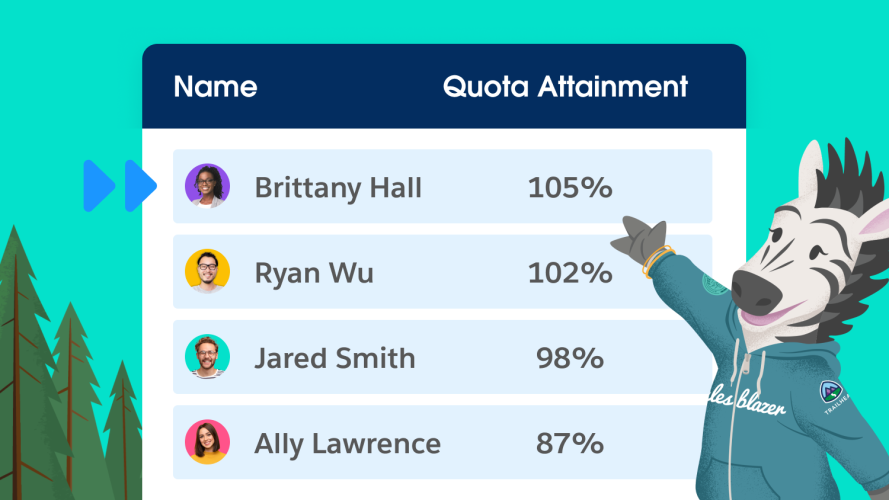BANT vs. MEDDIC: Comparing Popular Sales Qualification Methodologies



Learn the pros and cons of two popular sales methodologies and choose the right one for your business.

Samuel Holzman
There’s no single way to qualify prospects. In fact, there are dozens of qualification methodologies that sales teams swear by.
While it’s helpful to have options, the amount of debate around this topic can make it hard to know where to begin. That’s why this article compares two of the most popular sales qualification methodologies: BANT vs MEDDIC. Learn the pros and cons of each and see how to choose the right qualification approach for your business.
What you’ll learn:
- What is the BANT sales qualification methodology?
- What is the MEDDIC sales qualification methodology?
- BANT vs. MEDICC side by side: BANT pros and cons
- BANT vs. MEDICC side by side: MEDDIC pros and cons
- BANT vs MEDDIC: Picking the right sales methodology
Drive pipe faster with a single source of truth
Discover how Sales Cloud uses data and AI to help you manage your pipeline, build relationships, and close deals fast.



What is the BANT sales qualification methodology?
Let’s start with the simpler of these two common methodologies. The BANT methodology, which sales organizations have used since the 1950s, relies on four criteria to qualify prospective customers: Budget, Authority, Need, and Timing.
- Budget: Does the prospect have the budget available to purchase your product or service?
- Authority: Does the person you’re speaking with have the decision-making power to purchase your product or service?
- Need: Have they identified and articulated a specific need that your product or service will fulfill?
- Timing: Are they ready to make a purchase now? Do they have a purchasing or implementation timeline?
What is the MEDDIC sales qualification methodology?
The MEDDIC sales methodology is far more complex than BANT, as its purpose is not simply to identify sales readiness, but to do so while considering the human and technical nuances of the modern buyer’s journey. MEDDIC consists of the following criteria: Metrics, Economic Buyer, Decision criteria, Decision process, Identify pain, and Champion.
- Metrics: What quantifiable results does the prospect want to achieve by using your product? What specific metrics and KPIs are most relevant to them?
- Economic buyer: Who within the company has final say in the buying process? What is their relationship to your current point of contact? Have you engaged with all decision-makers?
- Decision criteria: What criteria do they use to evaluate vendors and products before making a purchasing decision?
- Decision process: What does their purchasing process look like? What specific procedures, approvals, and stakeholders are involved in their decisions?
- Identify pain: What problem do they want to solve? How has this problem impacted them and what consequences would occur if they don’t adopt a solution to the problem?
- Champion: Who within the company can advocate for your product or service? What influence will they have over the decision-making process?
BANT vs. MEDICC side by side: BANT pros and cons
Now that you understand the basics, let’s cover the pros and cons of each methodology. We’ll start with BANT.
Pro #1: Simplicity
BANT is an easy methodology to adopt and put into practice. The elements are simple for sales reps to understand, regardless of their skills and experience. As a result, your sales team will be able to follow the BANT methodology consistently — you’ll be less likely to encounter errors in the qualification process that stem from confusion about the criteria.
Pro #2: Efficient qualification and disqualification
Speed and efficiency are the cornerstones of the BANT methodology. You use this methodology in order to determine which prospects to pursue, as quickly as possible. This streamlined process is particularly advantageous if your sales cycle is shorter and you need to engage with qualified leads as swiftly as possible, rather than extend the qualification process to capture more details.
Likewise, BANT empowers sales reps to disqualify leads faster if they don’t meet any of the four major criteria — which mitigates the risk of wasting time on the wrong prospect and enables reps to pivot quickly to more qualified deals.
Pro #3: Emphasis on purchase readiness
Unlike MEDDIC, which explores many different nuances of the purchasing process, BANT focuses primarily on finding prospects who are ready to buy your product now. It foregoes the more complex factors in order to highlight prospects who have the budget for your product, the need to use it, the authority to purchase it, and an urgent timeline for adoption and implementation.
By prioritizing purchase readiness, you’ll put your sales reps in a position to identify easy wins and close deals faster.
Pro #4: Seamless sales and marketing alignment
The impact of your sales qualification methodology will extend beyond your team. With a clear, streamlined methodology in place, you’ll foster stronger alignment with your marketing team — as they’ll be able to understand exactly what sales reps are looking for and adjust their lead generation efforts accordingly.
Con #1: Limited context
The BANT methodology ignores many of the key factors that influence a prospect to purchase a product. In a way, it’s a quick series of yes-or-no questions and answers: “Do they have the budget? Do they have the authority? Do they have the need? Can they buy it now?”
But the typical buyer’s journey is much more complex than a simple checklist. This is especially true in the world of enterprise sales, where sales cycles are longer, the average deal size is often larger, and the prospect’s needs are more nuanced. Failing to capture important contextual information can result in a seemingly qualified lead turning into a lost opportunity.
Con #2: Ignores multi-stakeholder buying committees
Gartner reports that the average B2B purchase decision involves six to ten stakeholders. Although the BANT methodology does emphasize purchase authority, it doesn’t involve a deep exploration into what the decision-making group looks like.
If you’re selling a solution to small business owners, this surface-level approach might be sufficient. Large corporations? Not so much. Applying the BANT methodology to these complex sales scenarios can result in a deal falling through in the final hour when stakeholders you failed to engage enter the conversation.
Con #3: No focus on relationship-building
Effective selling relies on much more than just checking boxes. It hinges on a number of human factors, from the prospect’s feelings about their current pain points to the sales rep’s ability to demonstrate an understanding and empathy for the prospect. BANT disregards many of these human elements, instead focusing on the efficiency of the initial qualification.
While reps may be able to qualify a lead faster using BANT, their surface-level understanding of needs and pain points will hinder their ability to connect with the prospect on a human level and establish trust. And trust can be the difference between a won or lost opportunity.
Con #4: Risk of disqualifying good-fit prospects.
While BANT is easy to understand and apply, it’s also extremely rigid in its structure. The efficiency of qualifying leads based solely on budget, authority, need, and timeline comes at a cost. Namely, disregarding the more nuanced factors can result in disqualifying leads who could have been nurtured into valuable customers over time.
For example, say a prospect doesn’t exhibit a clear need for the solution you offer. With the BANT methodology in place, they never get past the qualification stage. But, had a sales rep dug deeper into the prospect’s pain points, they may have discovered that the prospect is just beginning to experience problems that your solution is equipped to solve. In this scenario, a lead that could’ve been nurtured toward a sale ends up being disqualified and forgotten.
BANT vs. MEDICC side by side: MEDDIC pros and cons
Now, let’s explore the advantages and disadvantages of implementing the MEDDIC qualification methodology.
Pro #1: Comprehensiveness
The MEDDIC methodology is a much more thorough method for sales qualification. For starters, focusing on specific metrics and pain points enables sales reps to learn about a prospect’s motivations beyond a surface-level interest in a product.
And, by learning everything they can about the decision-making process, reps will understand what steps they’ll need to take, who they need to talk to, and what hurdles they’ll need to overcome in order to close a deal. It’s valuable to gather all of this information upfront, especially when dealing with longer, more complex sales cycles.
Pro #2: Emphasis on human factors
BANT emphasizes purchase readiness, whereas MEDDIC focuses more on the human elements that influence a buying decision. It emphasizes the pain points a prospect is experiencing and how their day-to-day lives could be improved by your product. And it highlights the specific people that a sales rep will interact with throughout the process — the stakeholders that make up the buying committee, and the champion who will advocate for your solution.
This information enables sales reps to not only engage the right people, but establish stronger relationships with them. Understanding pain points is useful for qualifying leads, but demonstrating an understanding of pain points will earn the prospect’s trust throughout the sales process.
Pro #3: Continuous qualification
After the initial qualification stage, the value of the BANT methodology diminishes. MEDDIC, on the other hand, is a methodology that promotes continuous evaluation throughout the sales process.
Here’s a deeper dive: The MEDDIC methodology helps sales reps gather enough information to qualify leads. As they’re guiding a prospect through the sales process, however, they can continue to lean on the MEDDIC criteria. As they communicate with the prospect, they’ll gather more and more information about their pain points and decision-making protocols — and as they learn more, they can revisit their initial qualification process, assess the deal’s progress compared to their expectations, and identify potential risks they failed to recognize early on.
Pro #4: Reliability
Every seller wants to avoid the “What happened?” experience. In other words, the dreaded scenario in which a sales rep meets with a prospect several times, feels confident about the deal, and then is left scratching their head when the prospect drops out or severs communication entirely.
The MEDDIC methodology reduces the risk of these sorts of unexpectedly lost opportunities. BANT may be the faster method, but its disregard for context puts sales reps in a position to miss important warning signs. Sellers who use the MEDDIC methodology gain a deeper understanding of a prospect earlier on so they’re less likely to be blindsided by a deal falling through.
Join the Salesblazer movement
We’re building the largest and most successful community of sales professionals, so you can learn, connect, and grow.

Con #1: Complexity
Even with adequate training, MEDDIC’s complexity makes it difficult to achieve consistency across your sales team. A rep’s ability to put the MEDDIC criteria into practice depends on their level of experience, comfort with juggling a variety of nuanced variables, and more — which means you’ll need to provide more personalized training and support to reps who struggle to grasp the methodology.
Con #2: Slower qualification process
As we’ve discussed, a more complex qualification strategy is often appropriate for longer sales cycles or larger deals.
But there are scenarios in which a measured approach to lead qualification becomes detrimental. For example, let’s say you have a high volume of inbound leads, but you only have a handful of inbound SDRs qualifying them. If these reps are too methodical, they might be too slow — failing to identify and engage with high-quality leads until it’s too late.
Con #3: Prolonged sales cycles
MEDDIC focuses on building relationships and thoroughly understanding a potential customer’s organization. This has its benefits, as we’ve covered, but it also typically results in longer sales cycles. While long sales cycles are the norm in certain industries, they might not align with your company’s current goals and priorities.
Perhaps market conditions or other factors have forced your organization to prioritize pipeline acceleration and shorter sales cycles. In this scenario, the MEDDIC methodology may be too inefficient to support these objectives.
Con #4: Reliance on technology
Simply put, a MEDDIC methodology is not sustainable if you don’t have the tools to support it. This methodology requires reps to collect and keep track of more data points than the BANT methodology. If you’re relying on documents and spreadsheets to track the complex criteria we’ve covered today, you’re setting yourself up for failure.
Therefore, implementing MEDDIC requires you to assess your current tech stack and determine whether it’s built to support a complex qualification methodology. A new tool or significant changes to your current system may require extensive training before reps are ready to use the MEDDIC methodology.
An easy solution here: Using a CRM that’s intuitive and has all the features needed to support qualification out of the box. Fold in AI and automation, and you can take a lot of the MEDICC steps off reps’ plates.
BANT vs MEDDIC: Picking the right sales methodology
By now, you understand that both BANT vs. MEDDIC sales methodologies have their respective advantages and difficulties. Experts argue over which methodology is best, but the truth is that plenty of sales organizations have achieved long-term success using BANT, and many others have thrived with MEDDIC.
Between BANT vs. MEDDIC, we can’t tell you which methodology is the best fit for your organization — but here’s a trusty checklist of considerations that will help you arrive at your own answer:
- Sales team experience: Experienced sellers who understand your product inside and out will adapt quickly to a complex sales methodology like MEDDIC. But, if your team is more inexperienced, consider how effective a methodology like MEDDIC will be if your team isn’t prepared to leverage it correctly. BANT might be better.
- Lead response time: How often is your team losing deals because of delays? If long, drawn-out follow-up processes or delays in the sales cycle are a sticking point for your team, it might not make sense to implement the MEDDIC methodology until those issues are resolved.
- Ideal customers: BANT is an ideal methodology if you primarily sell to small and mid-sized businesses. For more complex, enterprise-level deals, the additional context provided by the MEDDIC methodology becomes more essential.
- Product complexity: If the purpose and characteristics of your product are easy to understand, the BANT criteria may be enough to identify potential customers. If you sell a product that’s complex, has many use cases, or addresses a wide variety of pain points, MEDDIC is the more reliable methodology.
- Tools and resources: If your CRM platform is robust and flexible enough to track a wide range of data points, you’ll be well-equipped to implement MEDDIC. If your current system can’t support a complex methodology, you’ll be safer adopting a more streamlined approach like BANT.
After you review this checklist, you might be asking a different question: “Do I really need to choose between BANT vs. MEDDIC?” The truth is, you don’t. As we mentioned in the beginning, there is a wide range of sales methodologies – none of which is any better or worse than the others.
No matter what popular methodology you decide to embrace, the truth is that each one becomes unique to the company that’s using it; you adjust and adapt it to meet your needs. So, there’s no reason you can’t customize these methodologies, or build one that includes elements of both.
For example, you might decide to use BANT for initial lead qualification and then leverage MEDDIC criteria to further analyze a specific segment of qualified leads. Think of these methodologies as templates: You can follow them to a tee, add or remove certain criteria, or use them as building blocks to create your own methodology.
BANT vs. MEDDIC: Develop the qualification methodology that works for your team
The success of your sales methodology is ultimately in the hands of the reps who will follow it. No matter what methodology you choose — BANT vs MEDDIC, a combination of the two, or another one altogether — make sure to train your team on the methodology’s purpose, criteria, and how to put it into practice. Also, make sure to continuously revisit and reassess your qualification methodology. With a process as nuanced as deal qualification, even the smallest adjustment to your methodology can be the difference between winning and losing your next big customer.
Want to take the #1 CRM for a test drive?
Go on our Guided Tour to see how Sales Cloud boosts productivity at every stage of the sales cycle.


























